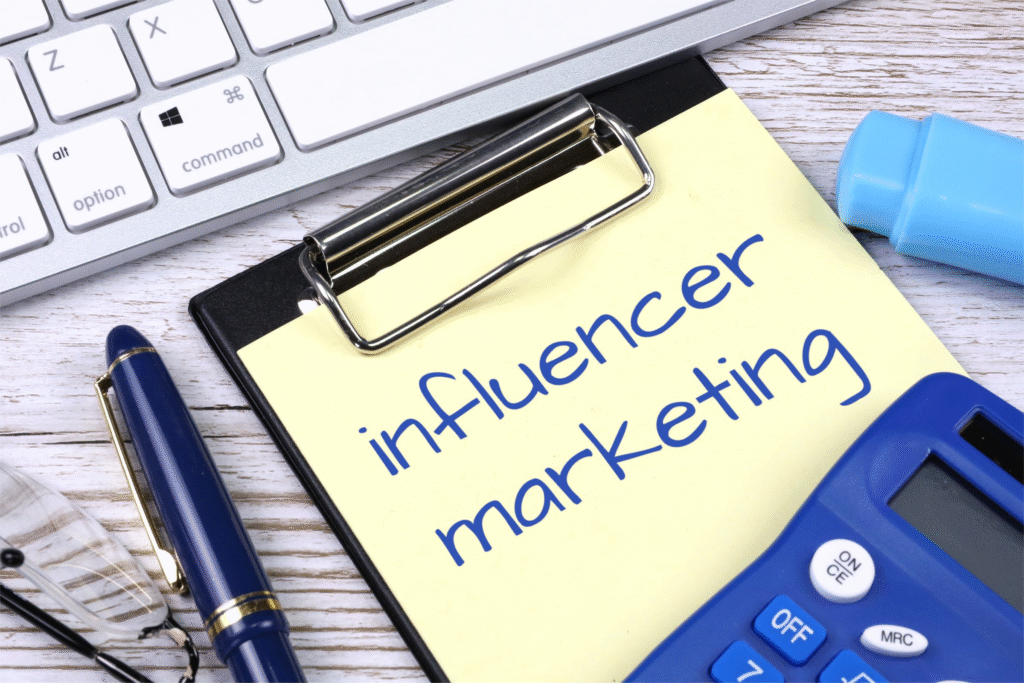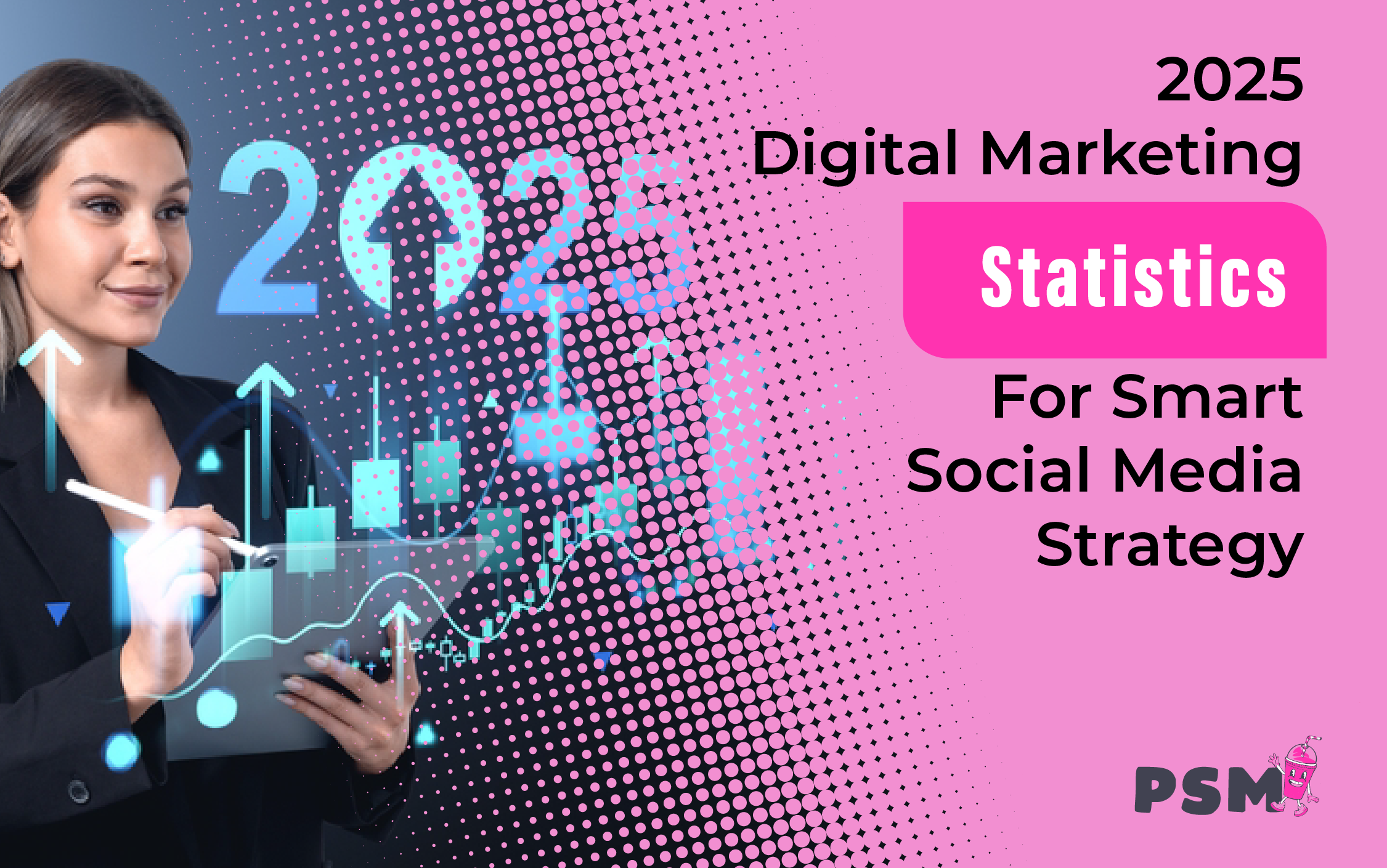Influencer marketing has rapidly shifted from a novel concept to a cornerstone of digital marketing. Authenticity is key; the power comes from using voices consumers recognize and trust. For any brand to make it, understanding the most recent influencer marketing statistics is absolutely vital. Think of it like this: you can’t win a race without knowing the track.
This plan uses people who already have a big online following. Social media stars make videos and posts showing off products. This affects what their fans think and whether they’ll buy something. This marketing channel is really effective; the data proves it.

Table Of Contents:
- The Rise of Influencer Marketing: Key Statistics
- The Impact of Influencer Marketing on Consumer Behavior
- The ROI of Influencer Marketing
- The Most Popular Platforms for Influencer Marketing
- The Power of Micro-Influencers
- Influencer marketing: The future’s looking bright.
- There are a lot of difficulties involved in influencer marketing; it’s not always easy.
- Conclusion
The Rise of Influencer Marketing: Key Statistics
Influencer marketing isn’t merely expanding; its growth trajectory is remarkable. It’s grown like crazy! Influencer marketing is now a big deal in the marketing field. Expansion continues; there’s no slowdown. We’re seeing a sharp increase in key stats; this upward trend shows no signs of stopping.
The growth is huge—these marketing statistics prove it. The image is very clear.
- A recent Statista report forecasts a $24 billion influencer marketing market by 2024. Influencer marketing is booming! People are investing heavily, showing a lot of faith in its capacity for growth; this is why it’s doing so well. Influencer marketing is booming; billions of dollars are pouring in.
- Interest continues to climb, with Google searches for ‘Influencer Marketing’ surging by 400% between 2016 and 2023 in the U.K. alone, as reported by Adobe. More and more businesses are curious and using this.
- Adoption is widespread, with 94% of small businesses intending to increase their influencer marketing spend and overall marketing budgets in the next year, based on a Taradel survey. Even small businesses see its worth, despite their marketing budgets.
Forget fleeting trends; influencer marketing is a major player in the marketing world, backed by solid numbers. Companies big and small are finding that this is now a crucial part of their marketing success. Brands increasingly allocate significant portions of their marketing budget to influencer collaborations.

We’re seeing a jump in numbers; it’s a direct result of consumers abandoning traditional ads and turning to ad-blocking technology. Advertising is changing big time. It’s a simple equation: less trust, more growth. Consumers increasingly seek recommendations from people they trust, and social media influencers often fill that role. Digital marketing needs a makeover.
Influencer marketing platforms are much better now, making it a breeze for brands to find, check out, and run influencer campaigns. Measuring results and improving marketing strategies is easier with these platforms. Good data and analytics? So that’s the secret to their success. These brands really understand their customers and market.
The Impact of Influencer Marketing on Consumer Behavior
A primary driver behind the widespread adoption of influencer marketing campaigns is their demonstrable effect on consumer behavior and buying decisions. Influencers form groups around common interests. This is only possible because of the trust they build with their followers. People often trust their advice more than regular ads.
Consider these statistics that highlight the influencer marketing impact:
- Trust is paramount: 69% of consumers trust recommendations from influencers, sometimes as much as they trust friends or family, according to Matter Communications. Building trust really pays off—it directly leads to more sales.
- LinkedIn says three out of four people check social media before buying something. That’s a lot of shoppers getting advice online! Influencers are really important during the research part of this project.
- Purchase intent is strong: 76% of users indicated they planned to make a purchase based on a social media post they saw, found in a Retail TouchPoints study. A compelling sponsored post can directly lead to conversions.
Social media influencers really impact what their followers buy. What people think really shapes what consumers buy. These folks are advisors and influencers, much more than simple content creators. People trust their endorsements; they’re great at forming authentic bonds.
Social media influencers heavily sway opinions, especially among young people who are always online. It’s a win-win: Companies use influencers to make more sales *and* to make people think highly of their brand. Growth depends on this approach. The effectiveness often depends on the authenticity of the brand influencer partnership.
Lots of great influencer campaigns use special discount codes or links to make it easier for people to buy stuff they see. Good tips plus genuine product recommendations fuel social commerce success.
The ROI of Influencer Marketing
Naturally, businesses scrutinize the return on investment for any marketing channel. How does influencer marketing perform when measured against the marketing spend? Just like the description said, it’s perfect. No disappointments here. Brands focused on achieving results will love it.
The influencer marketing ROI is often quite favorable:

- On average, businesses generate $5.78 in earned media value for every dollar spent on influencer marketing, with top performers achieving returns as high as $18 per dollar, according to Influencer Marketing Hub’s benchmark report. The profits from this look promising; it could be quite lucrative.
- It’s effective for growth, with 85% of marketers stating that influencer marketing contributes positively to their customer acquisition efforts, as noted in the same Influencer Marketing Hub study. This goes beyond simple brand recognition.
- Marketer confidence is high: 71% of marketers believe influencer partnerships represent a good use of their resources and are beneficial for business, found Smart Insights. These marketing campaigns? A total win! We achieved excellent outcomes; our customers are very pleased.
Influencer marketing really works at getting the word out, and it can even save you money compared to older marketing methods. Measuring influencer marketing ROI uses several methods. Tracking sales with unique links or codes is one way. Another is monitoring brand sentiment changes. Analyzing engagement tells us a lot about how people react—it’s like a report card for your content. It’s tough to measure accurately, but the bottom line is substantial profits.
Factors influencing ROI include the choice of influencer (considering their niche, audience demographics, and average engagement rate), the campaign’s objectives (brand awareness vs. direct sales), the quality of the influencer content, and the platform used. Marketing success depends on a well-thought-out strategy; it’s the best way to maximize your impact and achieve your financial objectives. Consider your target audience, your budget, and the overall marketing goals. Using an influencer marketing platform makes tracking and reporting much easier.
Comparing influencer marketing ROI to other digital marketing channels like paid search or display advertising often shows favorable results, particularly regarding engagement and trust-building. Reaching the right people with influencers boosts how well your message lands and how many sales you make.
The Most Popular Platforms for Influencer Marketing
The effectiveness of an influencer marketing campaign often hinges on selecting the right media platform. Different social media platforms cater to distinct audiences and content types, influencing where brands allocate their marketing spend. Certain platforms have emerged as leaders in the influencer marketing space.
Platform popularity is shifting:
- TikTok has surged ahead, now being the most popular social media platform for branded content collaborations, with 66% of brands utilizing TikTok influencers for their marketing efforts, according to The State of Influencer Marketing 2024: Benchmark Report. People love it; the short videos and viral trends are a big hit.
- Instagram remains a powerhouse, used by 47% of brands for influencer marketing. Its visual nature and established features like Stories and Reels keep Instagram influencers highly sought after.
- YouTube holds strong, particularly for in-depth content, with 33% of brands leveraging YouTube influencers for collaborations. People who watch want in-depth critiques, how-to guides, and longer videos for fun.
Brand, audience, and content type—these three factors are key when selecting a social media platform for your influencer campaign. Each platform has its own unique features that might be perfect for one campaign but not another. For instance, fashion and beauty brands thrive on visually driven platforms like Instagram and TikTok, while tech or educational brands might find more value on YouTube.

Facebook also remains relevant, especially for reaching older demographics, while platforms like Pinterest, Twitch (for gaming), and even LinkedIn (for B2B) serve specific niches within the influencer marketing market. Think of it like this: To cast a wide net and reel in a diverse audience, you’ll need to use different platforms. Each platform reaches a unique segment of the audience. You’re getting through to more people; they’re paying attention.
Knowing how people use each platform—what kind of stuff they like, what they expect to see, and how often they check in—is key to making your influencer marketing work. Brands must tailor their approach based on whether they are working with a TikTok influencer, an Instagram influencer, or a YouTube influencer.
The Power of Micro-Influencers
While collaborations with celebrities or mega-influencers garner significant attention, many brands are discovering substantial value in partnering with micro-influencers. These individuals typically have a smaller follower count (often defined as 10,000 to 100,000 followers) but cultivate highly engaged and niche communities. People really buy into their genuineness; it’s a big plus.
Effectiveness is clearly shown by the statistical analysis of this method. There’s no arguing with the facts; the data is conclusive.
- Micro-influencers frequently boast higher average engagement rates compared to macro-influencers or celebrities. Audiences feel heard when you engage with them directly; this leads to more substantial dialogue and better understanding on both sides.
- According to various marketing reports, around 60% of marketers find that micro-influencers deliver the best ROI for their campaigns, suggesting cost-effectiveness and impactful results. The amount influencers charge is often lower, allowing for broader reach across multiple influencers within a marketing budget.
- Consumer trust is high, with 82% of consumers reporting they are highly likely to follow a recommendation made by a micro-influencer, likely due to perceived authenticity and relatability.
Contrary to popular belief, a large number of followers isn’t a surefire path to successful influencer marketing. The impact of an influencer goes far beyond just their numbers. Consider the level of engagement and relevance to their audience. Micro-influencers connect brands with their ideal customers. This is because they already have a loyal following who trust their opinions. For example, a brand selling hiking boots might partner with an influencer who posts about their outdoor adventures. Concentrate your marketing and watch your sales soar! You’ll also gain a lot of happy customers who spread the word. Think of it like this: instead of shouting into a crowd, you’re whispering to your best customers. They’ll spread the word for you.
Because micro-influencers focus on specific topics, they’re seen as reliable reviewers and sources of information. Smaller teams make it easier to create really personal partnerships with influencers. Brands may choose to work with multiple micro-influencers simultaneously to achieve broader reach while maintaining high engagement levels.
Evaluating influencers should go beyond mere follower count; metrics like engagement rate, audience demographics, content quality, and alignment with brand values are crucial for selecting the right partners, regardless of their size. Influencer marketing success depends on using a range of influencers; carefully select them to fit your campaign’s needs. Think big names and micro-influencers!
Influencer marketing: The future’s looking bright.
Tech changes, how people buy things, and app updates are always changing the influencer marketing game. Influencer marketing is about to get a makeover. Several key trends will be at the forefront. For example, the rise of micro-influencers and a greater focus on authenticity will impact the landscape. Companies must be aware of the newest marketing strategies; otherwise, they’ll fall behind. Smaller companies feel this impact most. Ignoring the latest developments could mean losing customers. The competition is fierce and those who stay informed are the ones who succeed.
Let’s look at the latest trends; they’re pretty cool.

- The integration of Artificial Intelligence (AI) is growing, with 58% of marketers currently employing AI tools for tasks like identifying suitable influencers, vetting profiles for authenticity, predicting campaign performance, and managing workflows, as highlighted by Statista. Better decisions are easier to make thanks to this technology; it streamlines the whole process.
- TikTok, Instagram Reels, and YouTube Shorts are hugely popular, and that’s boosting video content even higher. Short-form, authentic video content is becoming increasingly central to influencer marketing success.
- Brands are increasingly favoring long-term partnerships and ambassadorships over single sponsored post collaborations. Stronger bonds between influencers and their followers are built on lasting relationships. Reliable messaging? Happy customers keep coming back. That’s the secret. Think of it like this: consistent communication equals loyal fans.
- Influencers now have access to a wider range of tools and income streams thanks to the creator economy. This has led to more advanced content and diverse collaborations—it’s not just about endorsements anymore.
- Because of the increased focus on transparency and regulation, influencers and brands must clearly state when a post is sponsored. Maintaining audience trust is the main goal. Authentic product feedback is becoming more valued.
- Social commerce features are becoming more integrated into social media platforms, allowing for seamless purchasing directly from influencer posts, further blurring the lines between content consumption and shopping. Influencers are now a common way for brands to give out discounts.
Influencer marketing is changing; it’s becoming more strategic, uses data, and integrates different approaches. Real results, lasting value, and genuine impact—that’s what matters most. Brands need to roll with the punches to get the most from their influencer marketing budgets.
The term “influencer” is evolving. It’s no longer limited to just social media personalities. Think of dedicated customers, company insiders, and niche specialists—they’re all influencers now, too. Credibility and reach improve dramatically when you incorporate diverse voices; think of it like this: the more perspectives you include, the more people will relate to your message and the more impact you will have.
There are a lot of difficulties involved in influencer marketing; it’s not always easy.
Although influencer marketing is successful and growing fast, there are challenges to overcome. Things aren’t always simple. There are always bumps in the road. Smart brands anticipate problems when planning influencer marketing campaigns to make sure they are both effective and ethical. Addressing these challenges proactively is part of developing a robust marketing strategy.
Expect a few hurdles along the way.
- The prevalence of ad blockers poses a challenge, with 42% of internet users employing ad-blocking software, according to Backlinko. Real influencer posts—the ones that aren’t just ads—are more valuable now. This is because viewers really don’t like content that’s all about selling something. Things are different now.
- Measuring influencer marketing ROI accurately remains a significant hurdle, cited by 78% of marketers as their top challenge in this area. Attributing sales or brand lift directly to specific influencer activities can be complex, requiring sophisticated tracking and analytics.
- Maintaining authenticity while scaling influencer programs presents a delicate balance. Teamwork is booming, but true, heartfelt endorsements are what really matter to people. Fake-sounding ads? Those won’t help you in the long run. A good influencer match makes all the difference. Success depends on it.
- Influencer fraud, such as purchasing followers or engagement, remains a concern, necessitating careful vetting processes often aided by an influencer marketing platform or specialized tools.
- Negotiating fair rates requires understanding market benchmarks for what influencers charge based on factors like reach, engagement rates, content type, and usage rights.
- Staying ahead of the curve in social media marketing requires continuous education. Influencers must adapt to algorithm updates to effectively reach their target demographics; otherwise, their content will get lost in the shuffle.
To make an influencer campaign work, you’ve got to plan well, communicate clearly, carefully check out potential partners, and be completely transparent about results. Influencer Marketing Hub and Sprout Social benchmark reports offer great information. Solving these problems lets brands create influencer programs that truly work and last.
Real results come from setting expectations, tracking meaningful performance indicators (not just the superficial ones!), and building great partnerships with your influencers.
Conclusion

The stats are clear: influencer marketing is a major player and a lasting trend in the marketing game. Connecting brands and customers through reliable spokespeople is what this tool does best. This matters a great deal; it’s crucial to the situation. It has weight. Pay attention; this is crucial. The effects are substantial; it’s not insignificant. Consider the consequences. Worth billions, this market shows how well it works in lots of areas. It really worked out well; a big success for sure.
Influencing buying habits, boosting marketing ROI, and setting platform trends—the data clearly shows its impact. Big social media stars are different from smaller ones. The proof shows this clearly. Big social media sites like TikTok, Instagram, and YouTube give brands cool ways to reach their fans. Influencers help them do this. Marketing needs to change with the times. Because of AI, video, and our partners, things are different now. Get ready. Get ready—big changes are on the horizon.
Measuring success and keeping things real are tough, but digital marketing is getting better and more connected all the time. To make your influencer marketing campaigns really pop, pay attention to the latest data. Sprout Social shows you exactly how your audience interacts with your social media posts. Armed with this information—engagement rates and platform usage—you can fine-tune your strategies for maximum impact. Success is within reach with this. Brand awareness will soar!


0 Comments